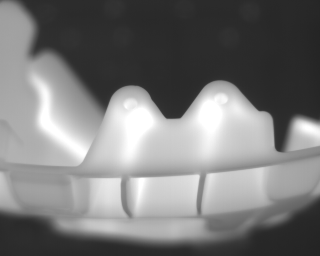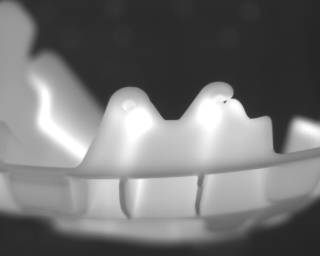Plastic parts for the automotive industry are subject to strict quality criteria. If defective catches and overfilled or missing material are missed by the supplier, this can have expensive consequences. Some errors are certainly difficult or impossible to discover using conventional visual inspection methods. Important details, such as catches, are hardly visible in classic lighting in front of a cast body. In addition, designing lighting for various components is time-consuming and prone to errors.
A thermal imaging camera, on the other hand, supplies a high-contrast image of the still-warm injection-moulded parts. Even catches stand out clearly against the background when looking at thermal separation as they cool more quickly than the massive material. In collaboration with Industriethermografie Schweiger, the image processing specialist Vision & Control used this innovative approach to develop a thermographic inspection system for large plastic parts made by injection moulding. Immediately after injection, a robot removes the component from its mould and holds it in various positions in front of the thermal imaging camera. This means that the last filling point, the catches, the injection point or other function-relevant details, for example, can be inspected closely.
Either the FLIR A35 (IR resolution 320 x 256 pixels) or the FLIR A65 (IR resolution 640 x 512 pixels) will be used as a thermal imaging camera in the ThermoInspection system. The vicosys 5400 multi-camera system takes on image processing. In addition to 16 camera inputs, it also provides four power-over-ethernet ports. Its operating system, webHMI, is entirely web-based. It is compatible with all popular browsers and control surfaces in production environments. So practically any input device on the same network can communicate with ThermoInspection — whether that’s the PC right by the machine, the computer in the quality assurance office or the tablet in the hands of a technician on site. Thanks to its clearly-structured operating concept, it’s very easy for the user to set up new inspections.
ThermoInspection is already successfully in use at Thermografie Schweiger and leading car supplier Magna HIG.


